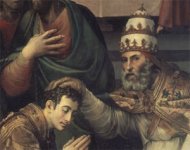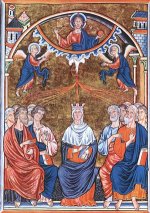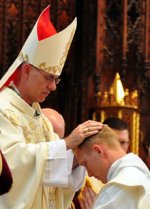I obviously have no means of proving that the clothing fashion you see below had anything to do with the race of giants. At the same time, long sleeves and the general baggy appearance could add to the existing circumstantial evidence collection.
A boyar or bolyar was a member of the highest rank of the feudal Bulgarian, Russian, Wallachian, Moldavian, and later Romanian, Lithuanian and Baltic German nobility, second only to the ruling princes from the 10th century to the 17th century.
KD: I don't know. Cutting holes in sleeves in order to be able to use your hands... sounds and looks pretty weird. That is in my opinion.
A boyar or bolyar was a member of the highest rank of the feudal Bulgarian, Russian, Wallachian, Moldavian, and later Romanian, Lithuanian and Baltic German nobility, second only to the ruling princes from the 10th century to the 17th century.
- At the very least, this is a waste of cloth of fabric.
KD: I don't know. Cutting holes in sleeves in order to be able to use your hands... sounds and looks pretty weird. That is in my opinion.
- What do you think?





